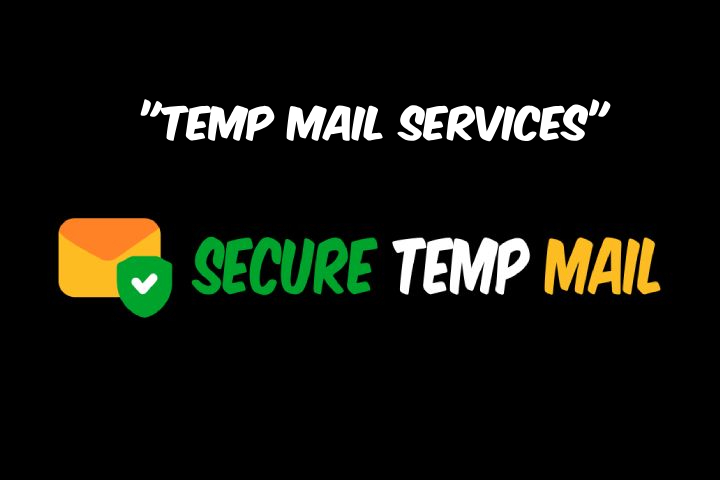Introduction to Temporary Email Addresses
In today’s digital age, privacy is a growing concern for many users. Whether you're sharing sensitive documents or simply want to keep your transactions discreet, the need for anonymity in file transfers has never been more crucial. Enter temporary email addresses—a powerful tool that allows you to send and receive files without revealing your identity. These disposable emails are designed specifically for one-time use, keeping your personal information under wraps while ensuring secure communication. Curious about how they work? Let’s dive into the world of temporary email addresses and explore their benefits, creation process, and best practices for transferring files anonymously.
Benefits of Using Temporary Email Addresses for File Transfers
Using temporary email addresses for file transfers offers a layer of privacy that many users seek today. When you share files through a disposable email, your true identity remains hidden. This anonymity can be crucial when transferring sensitive information.
Another advantage is the reduced risk of spam. By using a temporary address, you ensure that your primary inbox stays clutter-free after completing the transfer. Once you've received what you need, simply discard the temp email—along with any potential unwanted messages.
Security is also enhanced with these addresses. If you're sharing files over public networks or with unknown recipients, having an ephemeral email minimizes exposure to phishing attacks and data breaches.
Setting up temporary emails is quick and hassle-free. You can create one in seconds without lengthy sign-up processes or personal details required, making it an efficient solution for instant file sharing needs.
How to Create a Temporary Email Address
Creating a temporary email address is quick and straightforward. First, choose a reliable temporary email service. Websites like TempMail or Guerrilla Mail are popular options.
Once you're on the site, look for an option to generate a new email address. This typically involves clicking a button that says “Create” or “Get Email.”
The platform will instantly provide you with a unique address. It’s usually random but can be customized in some cases.
Now, you can use this temporary email for file transfers without revealing your personal information. Most services allow you to receive emails for a limited time before they disappear.
Remember, these addresses are not meant for long-term use or sensitive communications. Use them solely when anonymity is essential to protect your identity online while transferring files securely.
Step-by-Step Guide on Transferring Files Anonymously
Transferring files anonymously is simple with a temporary email address. Start by creating your temporary account on a reliable service. Choose one that doesn’t require personal information.
Once you have your new email, upload the file you want to share through an anonymous file transfer service. Look for options that emphasize privacy and security.
After uploading, input the recipient’s temporary email address. This ensures both parties remain nameless in the process.
Review any additional settings or features provided by the service before hitting send. Some platforms allow password protection for added security.
Now wait for confirmation of delivery from the file transfer site. If successful, notify your recipient so they can access it promptly while maintaining anonymity throughout this exchange.
Precautions to Take When Using Temporary Email Addresses
When using temporary email addresses, it’s essential to stay vigilant. While these services provide anonymity, they can also attract unwanted attention.
Always remember that some providers may log your activity. Choose a reputable service that prioritizes privacy and security. Check their policies before sending sensitive information.
Avoid sharing personal details in any file transfers. Even though the email is temporary, safeguarding your identity should remain a priority.
Be cautious with links and attachments from unknown sources. Cybercriminals often exploit temporary emails for phishing attempts or malware distribution.
Consider setting an expiration time for your temporary email address if the option exists. This adds an extra layer of protection by limiting its lifespan and potential misuse after you finish transferring files.
Alternative Methods for Secure File Transfers
When seeking secure file transfers, several alternatives exist beyond temporary email addresses. One popular method is using encrypted cloud storage services. These platforms provide end-to-end encryption, ensuring that only the intended recipient can access your files.
Another effective option is utilizing Virtual Private Networks (VPNs). They create a private network over the internet, adding an extra layer of security during file sharing.
For those who prefer direct methods, consider peer-to-peer (P2P) file transfer tools. Applications like BitTorrent allow you to share files directly between users without relying on third-party servers.
Secure messaging apps also offer robust solutions for transferring sensitive documents. Many of these applications use encryption protocols to protect your data while in transit.
USB drives with hardware encryption are a reliable way to transport files physically. This method eliminates online risks entirely and keeps your information safe from prying eyes.
Conclusion
Transferring files anonymously has never been easier, thanks to the rise of temporary email addresses. These innovative solutions provide a layer of privacy that traditional methods often lack. With their ability to protect your identity and keep your communications secure, they are an invaluable tool for anyone looking to share documents discreetly.
Using temporary email addresses streamlines the file transfer process while ensuring that you maintain control over your personal information. By following simple steps and taking necessary precautions, you can navigate this digital landscape safely.
Whether you're sharing sensitive data or simply want to avoid spam, exploring alternative methods such as encrypted messaging apps may also enhance your security strategy. It’s all about finding what works best for you in today’s interconnected world. Embracing these tools can empower you with confidence as you handle online communications securely and efficiently.




